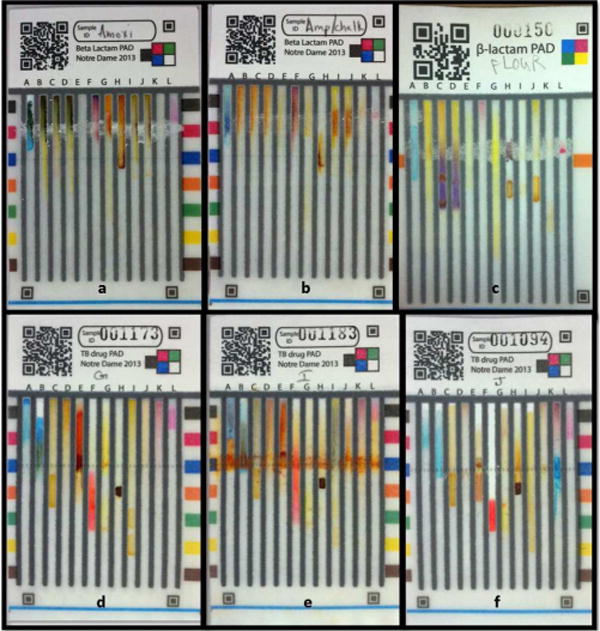Figure 2.

Examples of beta-lactam PADs (top panel) and TB PADs (lower panel), (a) Beta-lactam PAD with 100% amoxicillin gives dark green in lane A, green in lane B, and orange in lane G. (b) A 2:1 w/w mixture of ampicillin and calcium carbonate gives blue-green in lane A, orange in lane B, and no color in lane G (indicating ampicillin rather than amoxicillin) and dark orange at the swipe line in lanes I and J (indicating carbonate), (c) Maize flour gives no API colors and dark purple at the swipe line in lane H (indicating starch). (d) TB PAD with isoniazid/ethambutol combo gives royal blue at the top of lane A (ethambutol), green near swipe line in lane B as well as bright orange-red in lane E (isoniazid). (e) A 4-drug combo formulation produces orange across the entire swipe area and black in lanes C and I (rifampicin), orange and orange-red coloration in lanes D and E indicating pyrazinamide and isoniazid respectively. Rifampicin interferes with detection of ethambutol in lane A. (f) Diphenhydramine (an antihistamine) produces a bright aqua color in lane K, indicating an API not expected in TB medications. This PAD also shows a failed talc test in lane F. In all PADs lane L exhibits the pink timer spot, indicating that the PAD testing was carried out to completion.
